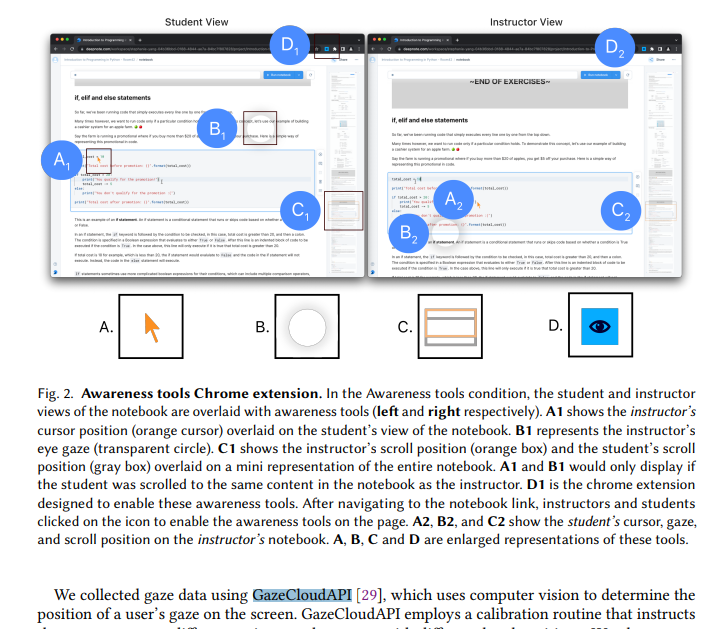One-on-one tutoring is effective for learning computer science since a tutor can work alongside a student and provide tailored feedback on their code. However, translating this type of instruction to a remote setting is challenging. Traditional methods such as screensharing lack key pedagogical functionality and most available tools are designed for collaboration rather than instruction. To identify tools that can support remote tutoring, we conducted an experiment to assess two resources: synchronous editing and awareness tools. In our study, an instructor teaches a learner introductory programming concepts remotely, collaborating through screensharing alone, a shared notebook with real-time collaborative editing, or a shared notebook with additional awareness tools overlaid. To embed the awareness tools, we designed a Chrome extension that enables real-time sharing of gaze and cursor data. Our results show that synchronous editing combined with awareness tools significantly improved learning. The awareness tools also helped tutors better communicate with the student, track their understanding, and establish a sense of presence. As a final contribution, we also assessed the efficacy of gazesharing using a webcam eye-tracker. While the accuracy was not as precise as a dedicated sensor, instructors described instances when the gaze was useful for gauging student attention and establishing presence. We discuss implications for remote tutoring in computer science and scaling awareness technology.
https://dl.acm.org/doi/pdf/10.1145/3610177

The world of education has seen a massive transformation in recent years, largely due to the advent of online learning and virtual classrooms. While remote learning offers unparalleled convenience, it has also presented its own unique challenges. The study aimed to address a fundamental issue in remote programming instruction – the need for improved communication and understanding between instructors and students. While real-time code editors have been a game-changer, there has still been a lack of real-time awareness of students’ actions, engagement, and focus. This is where awareness tools came into play. Shared gaze, cursor, and scroll position were introduced to provide instructors with real-time insights into students’ actions and engagement, fostering a more interactive and engaging learning environment. The study yielded several significant findings, shedding light on the effectiveness of awareness tools in the context of remote programming instruction: One of the most intriguing aspects of the study was the introduction of shared gaze through webcam-based eye tracking. This feature allowed instructors to track student attention, comprehend their thought processes, and establish a more profound sense of presence. While webcam-based gaze sharing had its limitations, it undoubtedly added immense value to the learning process. The study on awareness programming tools for remote tutoring offers a promising vision for the future of remote education. As remote learning continues to play an increasingly significant role in education, the integration of awareness tools becomes vital for creating engaging and effective virtual classrooms. The findings of this research emphasize the significance of real-time gaze sharing in the context of remote programming instruction, and its potential to revolutionize the way we teach and learn in virtual environments.Introduction
One of the most pressing issues in the world of remote learning is how to create an interactive and engaging learning environment, particularly in fields like computer science. The article “Awareness Programming Tools for Remote Tutoring,” recently published in the Proceedings of the ACM on Human-Computer Interaction, explores a groundbreaking solution to this problem. This study delves into the role of awareness tools, such as shared gaze, shared cursor, and shared scroll position, in improving remote programming instruction.The Significance of Awareness Tools
Key Insights from the Study
The Role of Gaze Sharing
Conclusion